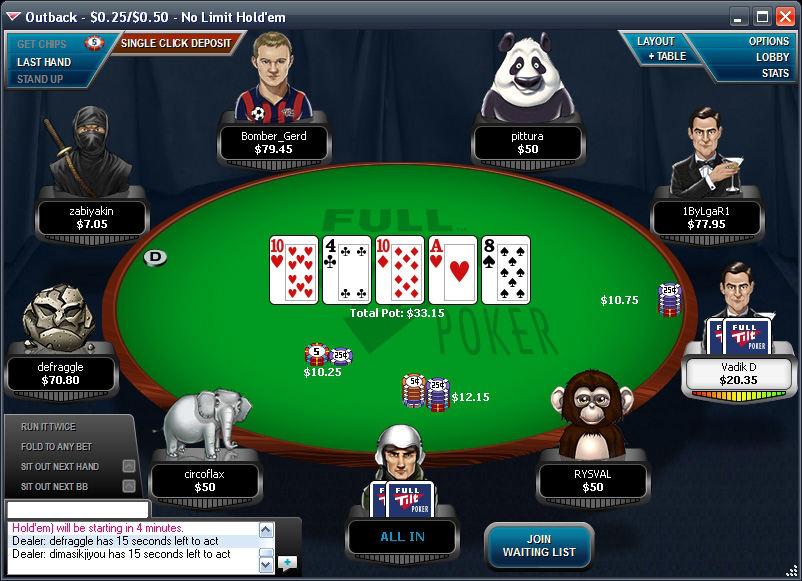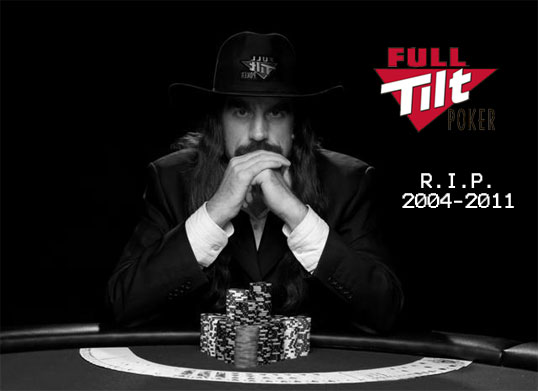Did Full Tilt Pay Their Players
- Did Full Tilt Pay Their Players
- Did Full Tilt Pay Their Players Make
- Did Full Tilt Players Get Their Money Back
In the early 2000s, online poker became the hottest thing on the internet. Sites like Paradise Poker and Planet Poker led the way, but it was Party Poker and PokerStars that really blew the doors right off and made the game a household name.

Not only did they stop all Full Tilt US traffic - Full Tilt Poker was shut down entirely and the company's assets were frozen. 11 individuals were charged for some combinations of money-laundering, bank fraud and online gambling offenses, including individuals from all the mentioned poker sites and some other individuals that helped these. Good news for former Full Tilt players from the US as a Justice Department claims administrator has said that players will start receiving their money soon. There's around $150 million owed to players based in the States and the whole affair has of course been going on since problems began back in April 2011 as Tile left the US market. As for Full Tilt players, in 2016 their wishes finally came true, with the Department of Justice ending their investigation and refunding money back to players who had balances. The process was a bit cumbersome (you had to remember your information and the best guess at the balance) but millions of dollars were returned to their rightful owners. Hicks sought to prevent Full Tilt from operating its website, soliciting players, or funding or accepting payments for illegal gambling in California. On September 11, 2009, Full Tilt was sued civilly in Nevada by Jason Newitt in the case of Jason Newitt v. Full Tilt Poker's owners took out hundreds of millions of dollars in dividends over a multi-year period and didn't have enough money left to pay back their players when the Department of Justice swept in and brought their hammer down on the site.
However, as important as these were, the fact that amateur players could face off against the best in the world made poker unique. Imagine walking onto a golf course and playing against Tiger Woods in a PGA event.
Impossible. In poker, your money is just as good as that of the pros, so it is a true equalizing sport; anyone can sit down and put their cash up against the best in the world.
A few poker pros started wearing the logos of online sites – Phil Hellmuth and Annie Duke being the most prominent. In early 2003, a day trader by the name of Ray Bitar decided that there was still room for more competition in the space (there was), and he started putting together the plans for a site with poker professional Chris Ferguson, the 2000 World Series of Poker Champion.
Party Poker already had a global brand and market dominance due to its early entry into the space. PokerStars had Chris Moneymaker and the angle that any amateur could play on their site and become the next World Champion.
The two decided that their angle would be to use Ferguson’s contacts in the poker world to not only drum up investment, but also to create the face of the site.
In short order, a series of founders were in place, allegedly including an array of the who’s who of poker: Howard Lederer, Phil Ivey, Andy Bloch, Jennifer Harmon, and John Juanda to name only a few.

With this crew of well-known players and a new TV audience that was seeing them on their screens with regularity, Full Tilt Poker was launched in early 2004.
The launch was by no means soft; the company spent a significant amount of money plastering TV poker programs with their logos and sponsoring a long list of poker players to wear their clothing while in and out of the poker room. This aggression would be a key factor in the future of this business.
Since it opened in June 2004, Full Tilt has been the online poker site of choice for thousands of budding poker players and professionals alike. Its excellent software, vibrant graphics, and innovative games made it extremely popular with players around the world.
When it first launched, Full Tilt Poker US customers were welcomed with open arms and they flocked to the site in droves for the reasons stated above, but also because the company was fronted by the likes of Howard Lederer, Chris “Jesus” Ferguson, Mike Matusow, and Phil Ivey, all of whom had become household names due to televised poker shows.

At Full Tilt Poker, USA residents could do exactly what the sites tagline suggested, “Learn, Chat and Play with the Pros,” and they did in massive numbers, helping to propel Full Tilt to second place in terms of real money cash game players, trailing only the mighty PokerStars in regards to traffic. Business was booming, tournament prize pools were swelling, and everything was rosy.
Then came what is known in the poker industry as “Black Friday.” Aptly, on Friday 13 October, 2006, the Unlawful Internet Gambling Enforcement Act of 2006 (UIEGA) came into force, which essentially made it illegal for banks and other financial institutions to process payments to gambling websites offering their services to residents of the United States.
While some online poker sites, such as partypoker, immediately withdrew from the U.S, others like PokerStars and Full Tilt continued to operate on American soil. It was a decision that paid off handsomely for PokerStars, but it was the beginning of the end for Full Tilt.
Poker sites had to be creative in order to process payments, thinking outside of the box for ways to have their players deposit and withdraw funds from the site. Unfortunately for Full Tilt Poker, US payment providers proved troublesome, which combined with some serious mismanagement by Full Tilt’s backroom staff, resulted in a huge black hole of funds.
Full Tilt continued to credit players’ account with the amounts they had attempted to deposit, but sometimes never received those funds from the payment provider. Its management team continued to do this for quite a length of time until the problem came to light and a figure of $300 million in “lost” funds was made public. This $300 million figure was what the American Department of Justice (DOJ) claimed Full Tilt had defrauded out of its customers, although former owner Chris Ferguson’s lawyer suggested the issue was most likely the result of mismanagement and not malice.
Did Full Tilt Pay Their Players
After the wheels fell off Full Tilt Poker, USA customers could no longer play on the once thriving site, in fact nobody could because Full Tilt was taken offline, seemingly lost forever, along with hundreds of millions of Full Tilt customers’ money.
US Players And Full Tilt Poker In 2015
This remained the case until July 2012 when the DOJ and PokerStars reached an agreement that saw PokerStars pay the DOJ $225 million up front and a total of $547 million. PokerStars also made $184 million available to refund all non-U.S. players within 90-days of signing the deal. Full Tilt Poker US customers are still to this day receiving their fund back from the DOJ, despite PokerStars making their balances available immediately.
On Tuesday 6 November, 2012, Full Tilt relaunched its real money operations, although Full Tilt USA was no more, the door slammed shut on them, just as it had for PokerStars’ American customers.
To this day, Full Tilt Poker US operations are non-existent, but that could be all set to change because PokerStars reentered the U.S. market on Wednesday 16 March, 2016 with a soft-launch, albeit only in the state of New Jersey. PokerStars has spent heavily in lobbying for other states to allow online poker, which if successful, could open the gates for a return of Full Tilt Poker US.
Did Full Tilt Pay Their Players Make
However, a full return of the original Full Tilt USA friendly site is actually unlikely because in February 2016, PokerStars announced its intentions to merge Full Tilt and PokerStars traffic during the Spring of 2016.
Although Full Tilt Poker US is no more, there are a number of alternatives for Americans wanting to play online poker in the USA. Currently, players can choose to head to 888poker, partypoker, PokerStars, and WSOP when they are in New Jersey, or WSOP.com when in the state of Nevada.
Did Full Tilt Players Get Their Money Back
In short, Americans cannot play at Full Tilt unless they are prepared to move to a country where Full Tilt currently operates.